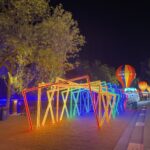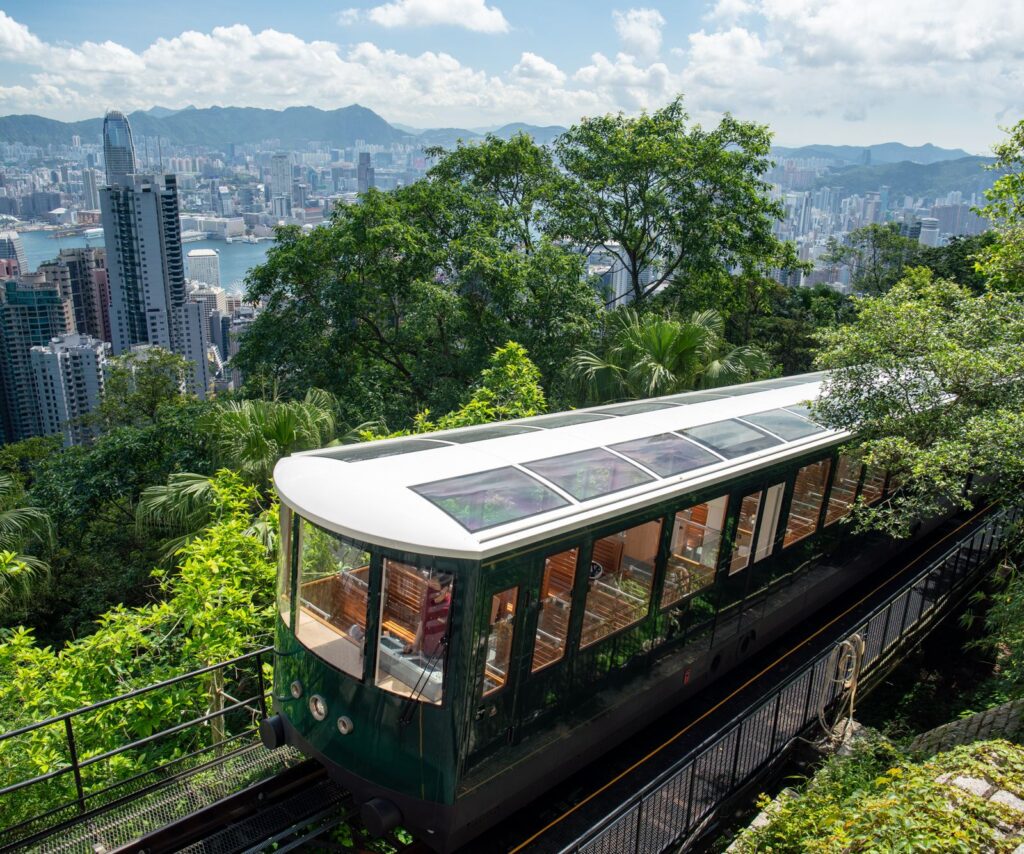Ping Shan Heritage Trail is located in Ping Shan village, Yuen Long District, New Territories. It passes by ancient pagodas and several villages and ancestral temples brimming with antiquity, spanning approximately 1.6 kilometers, offering insights into the early rural life through precious historical relics.
First stop, Juxing Pagoda: The existing ancient pagoda in Hong Kong, Juxing Pagoda, originally had seven stories but only three remain after centuries of weathering. The upper levels of the pagoda once housed the deity Kui Xing, believed to govern academic success, with each level adorned with auspicious inscriptions worth appreciating. Second stop, Shetan: Before entering Sheung Cheung Wai, you will pass by a simple altar made of green bricks, with a stone statue representing the deity She Gong, believed to protect the villagers’ safety. Third stop, Sheung Cheung Wai: With a history of over 200 years, Sheung Cheung Wai is a village on the Ping Shan Heritage Trail. Although parts of the green brick walls have been dismantled, the village’s gate tower, ancestral hall, and ancient buildings still stand as before, showcasing the layout and style of traditional villages. Fourth stop, Ping Shan Yang Hou Ancient Temple: Located in Hang Tau Tsuen, Ping Shan Yang Hou Ancient Temple is one of the six temples in Yuen Long District that worship Hou Wang. There are many stories about the origin of Hou Wang, with villagers believing him to be the loyal minister Yang Liang Jie from the end of the Song Dynasty, who sacrificed himself to protect the Song Emperor and is revered by later generations. Fifth stop, Tang Ancestral Hall: Surrounded by the three enclosures and six villages of Ping Shan, Tang Ancestral Hall features a grand three-part, two-courtyard architectural style, serving as a model for similar ancient buildings in Hong Kong. The absence of a threshold at the main entrance and the presence of a sandstone path in the front courtyard indicate that some members of the clan held important positions. To this day, the ancestral hall is still used for ancestor worship, celebrations, and gatherings. Sixth stop, Yu Qiao Er Gong Ancestral Hall: Built by the 11th ancestors of the Deng clan, Deng Shi Xian and Shi Zhao, Yu Qiao Er Gong Ancestral Hall is not only a clan hall but also served as the school for children from various villages in Ping Shan from 1931 to 1961, known as Dak Shue School. Today, you can still see the couplet on the gate when the school was established: ‘Strive for the good of all, cultivate virtue within oneself.’ Seventh stop, Jin Ting Study Room: Once a place for children from neighboring villages to study and for ancestral worship, the entire building is supported by granite columns, with the main door frame also made of granite slabs, and the exquisite interior decorations, such as lotus, peaches, and other auspicious patterns, as well as the gold carving of ‘Gan Luo paying homage to the prime minister,’ are considered masterful works of the time. Eighth stop, Qing Shu Xuan: Qing Shu Xuan, a residence for receiving visiting guests and scholars, is meticulously and lavishly decorated. From the wood carvings, murals, plaster sculptures, lattice windows, and brackets, one can see the grandeur of traditional Chinese noble households. Ninth stop, Hung Shing Palace: The residents of the New Territories’ rural areas hold great reverence for Hung Shing Wang, the deity who governs the sea. In order to ensure smooth maritime operations, the Deng clan built Hung Shing Palace for worship.The patio here has good lighting and feels spacious and comfortable. At the same time, through the patio, you can see the banyan trees around the building. The tenth stop, Pingshan Tang Clan Heritage Museum and Heritage Trail Visitor Center: Formerly the old Pingshan Police Station. Later, it became the headquarters and training center of the police dog unit. It is one of the few pre-war police station buildings remaining in the New Territories. In 2002, it was renovated into the Pingshan Tang Clan Heritage Museum and Heritage Trail Visitor Center, which contains the history of the Pingshan Tang clan and the historical sites along the Heritage Trail. The specific opening hours and business status are subject to the opening situation on the day.









